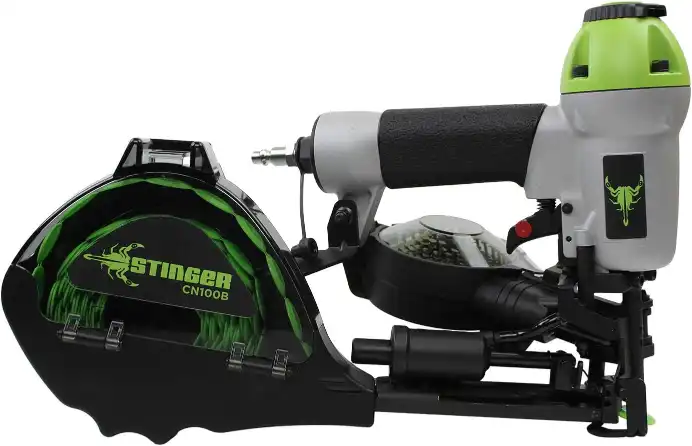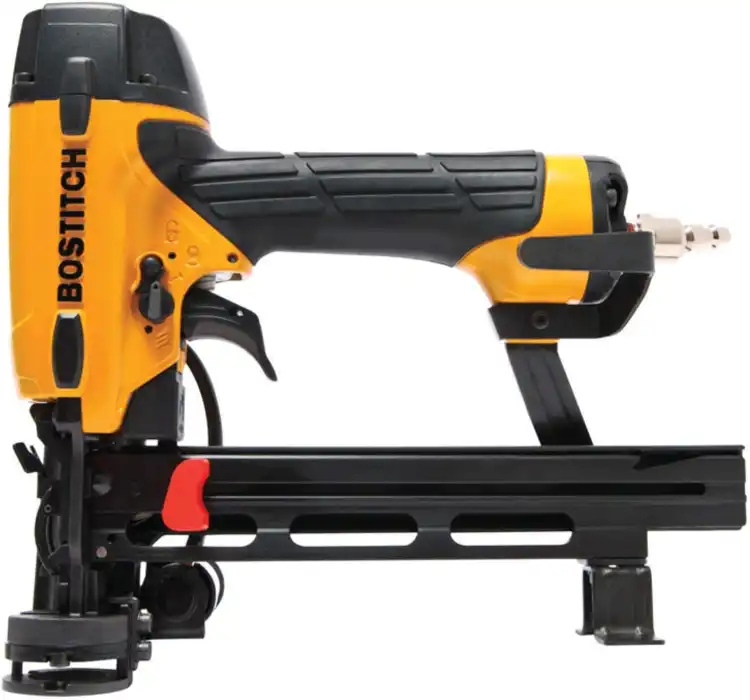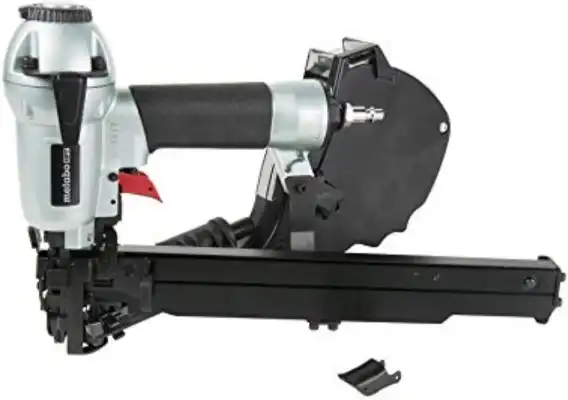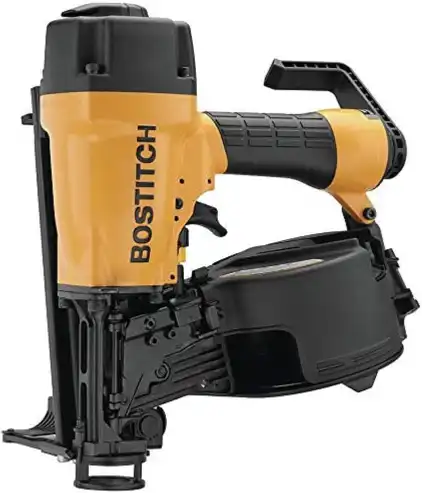Cap nailers, also known as cap staplers, are a vital tool in the construction industry. They are used to secure roofing felt and house wrap, providing a more secure and durable hold than traditional nails or staples. The unique design of cap nailers allows them to distribute the holding force over a larger area, reducing the risk of tearing and improving the overall performance of the material being secured.
Secure roofing and house wraps are essential for any building. They provide a barrier against the elements, protecting the interior from water damage and helping to maintain a comfortable indoor environment. Without proper installation and securing, these materials can become damaged or dislodged, leading to leaks, drafts, and other issues. This is where cap nailers come in, providing a reliable and efficient method of securing roofing and house wraps.
Understanding the importance of cap nailers, their functionality, and their role in roofing and house wraps is crucial for anyone involved in construction or home improvement. This article will provide a comprehensive overview of cap nailers, their benefits, and how to choose the right one for your needs.
Our Top Cap Nailer Picks

STINGER CN100B Pneumatic Cap Nailer
Check on AmazonKey Specs:
- Weight: 4.9 lbs (2.22 kg)
- Capacity: Holds 200 caps and 200 nails
- Firing Modes: Bumpfire and sequential
- Exhaust: 360° tool-free exhaust
- Compatibility: Works with STINGER 1” NailPac, plastic collated caps, and ring shank nail
The STINGER CN100B Pneumatic Cap Nailer is a game-changer for roofing projects. With its lightweight design (just 4.9 lbs), it speeds up underlayment installation by up to 50%. I appreciate the tool’s versatility, offering both bumpfire and sequential firing modes, and the tool-free depth of drive adjustment. The 200-cap capacity reduces reloading frequency, enhancing productivity. Plus, the 360° tool-free exhaust ensures flexibility and comfort on the job. A must-have for anyone working on roofing or house wrap installations.

BOSTITCH SB150SLBC-1 3/4-Inch to 1-1/2-Inch Cap Stapler Kit
Check on AmazonKey Specs:
- Staple Size: 3/4-inch to 1-1/2-inch with caps
- Weight: 4.7 lbs
- Housing Material: Durable aluminum
- Included Accessories: Oil, hex wrench, 1,000 staples, 1,000 caps, carrying case
- Warranty: 7-year limited warranty
The BOSTITCH SB150SLBC-1 Cap Stapler Kit is a reliable tool for securing materials like Tyvek, tar paper, and foam-board insulation. I love how the adjustable depth guide allows for precise stapling, ensuring optimal performance for different materials. Weighing just 4.7 lbs, the tool’s aluminum housing is both durable and lightweight, making it comfortable for extended use. With 1,000 staples and caps included, it’s a complete solution. The 7-year warranty adds confidence to this already great tool.

Metabo HPT Cap Stapler
Check on AmazonKey Specs:
- Weight: 4.8 lbs
- Staple Size: 7/8-inch, 1-1/4-inch, 1-1/2-inch
- Cap Size: 1-inch diameter
- Fastener Capacity: 200 caps, 200 staples
- Warranty: 5-year limited warranty
The Metabo HPT N3808AP Cap Stapler stands out for its impressive performance and ease of use. Weighing just 4.8 lbs, it’s light enough for extended use, yet robust enough to handle tough applications like roofing felt, foam insulation, and house wrap. The 200-capacity basket and tool-less depth adjustment are great for efficiency. With both sequential and bump firing triggers, it offers versatility. I appreciate the adjustable 360-degree air deflector, ensuring the exhaust goes where I want it, making this tool a top choice for pros.

Stinger CS150B Pneumatic Cap Stapler
Check on AmazonKey Specs:
- Weight: Not specified
- Staple Size: 5/8″ to 1-1/2″
- Cap Size: 1″ diameter
- Capacity: 200 caps, 200 staples
- Firing Modes: Bumpfire, sequential
The Stinger CS150B Pneumatic Cap Stapler is a fantastic tool for high-speed installation of roofing underlayment, housewrap, and foamboard. It’s designed to install materials up to 50% faster, and with its 200-cap and 200-staple capacity, you can work longer with fewer interruptions. I love the versatility of the bumpfire and sequential firing modes, and the tool-free depth adjustment ensures precision every time. The 360° tool-free exhaust is also a great touch, keeping the workspace clean and comfortable.

Bostitch Cap Nailer Model N66BC-1
Check on AmazonKey Specs:
Weight: Lightweight magnesium design
Fastener Range: 1 1/4″ to 2 1/2″ wire weld and plastic inserted coil nails
Magazine Capacity: 300 nails
Operating Pressure: 70–120 psi
Driving Power: 500 inch-pounds @ 100 psi
The Bostitch N66BC-1 Cap Nailer is a reliable and efficient tool for any roofing or underlayment project. The tool-free “Dial A Depth” adjustment allows me to quickly set nails to the desired depth with precision. I really appreciate the lightweight magnesium design, which is durable yet easy to handle. The quick load magazine makes reloading seamless, and with a capacity of 300 nails, I can keep working without frequent interruptions. It’s a fantastic choice for professionals looking for speed and reliability.
Understanding Cap Nailers
Cap nailers are a type of power tool used in construction and home improvement projects. They are designed to drive a nail or staple through a plastic cap, securing materials such as roofing felt or house wrap. The cap helps to distribute the holding force over a larger area, reducing the risk of tearing and improving the overall performance of the material being secured.
There are several types of cap nailers available on the market, each with its own unique features and benefits. Pneumatic cap nailers, for example, use air pressure to drive the nail, providing a powerful and consistent performance. Cordless cap nailers, on the other hand, offer greater mobility and convenience, as they do not require a constant air supply. There are also manual cap nailers, which require more effort to use but are typically more affordable and easier to maintain.
Regardless of the type, all cap nailers serve the same basic function: to secure roofing felt and house wrap. They are a vital tool in the construction industry, providing a more secure and durable hold than traditional nails or staples.
Importance of Cap Nailers in Roofing
Cap nailers play a crucial role in roofing. They are used to secure roofing felt, a protective layer that provides a barrier against the elements. Without proper securing, roofing felt can become damaged or dislodged, leading to leaks and other issues. Cap nailers provide a reliable and efficient method of securing roofing felt, reducing the risk of these problems and ensuring a long-lasting, durable roof.
There are several benefits to using cap nailers for roofing. First and foremost, they provide a stronger hold than traditional nails or staples. The cap helps to distribute the holding force over a larger area, reducing the risk of tearing and improving the overall performance of the roofing felt. This leads to a more secure and durable roof, protecting the building from water damage and helping to maintain a comfortable indoor environment.
Additionally, cap nailers are faster and more efficient than traditional methods of securing roofing felt. They can drive a nail or staple through a cap in a single action, significantly reducing the time and effort required for installation. This can lead to significant time and cost savings, particularly on large or complex roofing projects.
Importance of Cap Nailers in House Wraps
Just like in roofing, cap nailers also play a vital role in the installation of house wraps. House wraps are a type of weather-resistant barrier that helps to protect the building from water and air infiltration. They are typically installed over the sheathing and under the exterior siding, providing a secondary line of defense against the elements.
Cap nailers provide several benefits when used for house wraps. Firstly, they offer a more secure hold than traditional nails or staples, reducing the risk of the house wrap tearing or becoming dislodged. This is particularly important in areas with high winds or severe weather, where the house wrap may be subjected to significant stress. The cap also helps to seal the hole made by the nail or staple, preventing water and air from penetrating the barrier.
Furthermore, cap nailers can significantly speed up the installation of house wraps. They can drive a nail or staple through a cap in a single action, reducing the time and effort required for installation. This can lead to significant time and cost savings, particularly on large or complex projects.
Factors to Consider When Buying Cap Nailers
When buying a cap nailer, there are several factors to consider. One of the most important is the power source. Pneumatic cap nailers use air pressure to drive the nail, providing a powerful and consistent performance. However, they require a constant air supply, which can limit mobility and convenience. Cordless cap nailers, on the other hand, are powered by a rechargeable battery, offering greater mobility but potentially less power.
The size and capacity of the nails or staples the cap nailer can use is another important consideration. Some cap nailers can only use specific sizes or types of nails or staples, which can limit their versatility. Others have adjustable settings, allowing you to use a variety of sizes and types. The capacity of the nailer, or how many nails or staples it can hold at once, can also affect its efficiency and convenience.
Other factors to consider include the weight and ergonomics of the cap nailer, as these can affect its ease of use and comfort. The price and warranty are also important considerations, as they can affect the overall value and reliability of the nailer.
Top Cap Nailer Brands
There are several top brands that manufacture cap nailers, each with their own unique features and benefits. Some of the most popular include Bostitch, Hitachi, and Senco. These brands are known for their high-quality products, reliable performance, and excellent customer service.
Bostitch cap nailers are known for their durability and power. They offer a variety of models, including both pneumatic and cordless options, to suit a range of needs and preferences. Hitachi cap nailers are renowned for their precision and ease of use, with features such as depth adjustment and tool-less jam clearing. Senco cap nailers are praised for their versatility and efficiency, with models that can handle both nails and staples.
When comparing different brands, it’s important to consider factors such as power source, nail size and capacity, weight and ergonomics, and price and warranty. This will help you choose the right cap nailer for your needs.
How to Use a Cap Nailer Properly
Using a cap nailer properly is crucial for achieving a secure and durable hold. The first step is to load the nails or staples and caps into the nailer. This process will vary depending on the model, so it’s important to refer to the manufacturer’s instructions. Once the nailer is loaded, you can adjust the depth of the nail or staple if necessary. This is typically done using a dial or knob on the nailer.
When using the cap nailer, hold it firmly against the material being secured. The cap should be flat against the material, with the nail or staple going straight in. Apply pressure to the nailer and pull the trigger to drive the nail or staple through the cap and into the material. Repeat this process as necessary, ensuring that the caps are evenly spaced and securely attached.
It’s important to take safety precautions when using a cap nailer. Always wear safety glasses to protect your eyes from flying debris, and use hearing protection if necessary. Keep your hands and other body parts away from the firing area, and never point the nailer at yourself or others. Always disconnect the power source when not in use or when making adjustments to the nailer.
Maintenance and Care for Cap Nailers
Maintaining and caring for your cap nailer is crucial for ensuring its longevity and performance. Regular cleaning is one of the most important aspects of maintenance. This involves removing any dust or debris from the nailer, particularly from the cap and nail or staple feed. Lubricating the moving parts of the nailer can also help to prevent wear and tear and ensure smooth operation.
Over time, you may encounter issues with your cap nailer, such as jams or misfires. These can often be resolved by troubleshooting the problem. For example, if the nailer is jammed, you can usually clear it by opening the nose piece and removing the jammed nail or staple. If the nailer is misfiring, it may be due to a low power supply or a problem with the trigger mechanism. In these cases, it’s best to refer to the manufacturer’s instructions or contact a professional for assistance.
Regularly inspecting your cap nailer for any signs of damage or wear can also help to prevent issues. If you notice any problems, it’s best to address them as soon as possible to prevent further damage. This may involve replacing worn or damaged parts, or having the nailer serviced by a professional.
Conclusion
Cap nailers are a vital tool in the construction industry, providing a reliable and efficient method of securing roofing felt and house wraps. They offer a stronger hold than traditional nails or staples, reducing the risk of tearing and improving the overall performance of the material being secured. This leads to a more secure and durable building, protecting it from water damage and helping to maintain a comfortable indoor environment.
When choosing a cap nailer, it’s important to consider factors such as power source, nail size and capacity, weight and ergonomics, and price and warranty. There are several top brands that manufacture cap nailers, including Bostitch, Hitachi, and Senco, each with their own unique features and benefits. By understanding the importance of cap nailers and how to choose the right one, you can ensure a successful and efficient installation of roofing felt and house wraps.
Proper use and maintenance of your cap nailer is also crucial for ensuring its longevity and performance. Always take safety precautions when using the nailer, and regularly clean and inspect it for any signs of damage or wear. If you encounter any issues, troubleshooting the problem or seeking professional assistance can help to resolve them and prevent further damage.
FAQ
What is a cap nailer?
A cap nailer is a tool used to fasten roofing, siding, and insulation materials by driving nails with plastic caps to prevent damage or detachment.
How does a cap nailer work?
It drives nails with attached plastic caps into materials, offering better hold and protection.
What are the benefits of using a cap nailer?
It provides enhanced holding power, reduces the risk of tearing, and improves material lifespan.
Can a cap nailer be used for all types of roofing?
Yes, it’s mainly used for roofing, but it can also be effective for siding and insulation installation.
Is a cap nailer easy to use?
Yes, it is designed for efficient operation, but proper handling and technique are important for best results.
